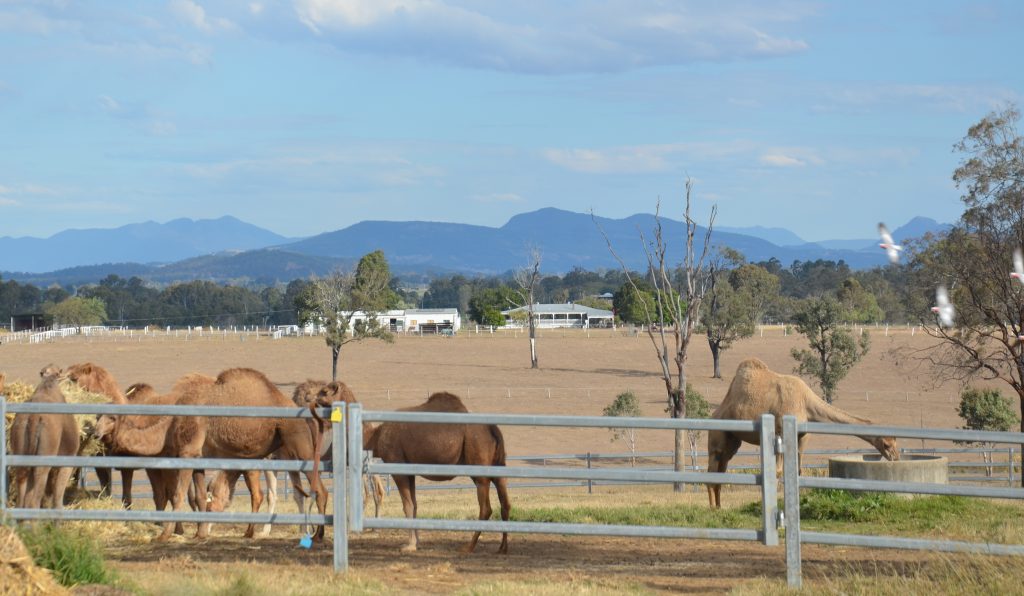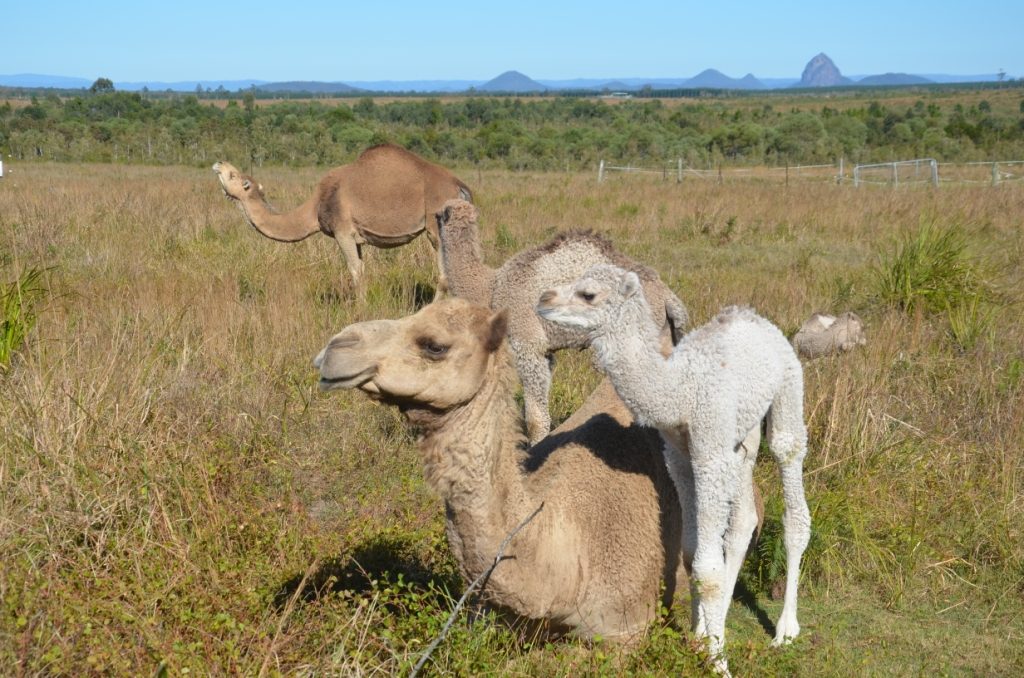
The modern dairy sector is keeping supermarket shelves well stocked, but if you look behind the scenes it is often not a pretty picture: A glut of milk is depressing prices and forcing small and medium sized farmers to give up. The cows are numbers that wander back and forth between feeding troughs and milking carousels, eager to relieve themselves of the pressure of the enormous volumes of milk that they have been wired to produce. Their life spans are short, and mothers and calves are separated at birth; calves are housed in solitary igloos, and the male calves have become an unwanted by-product as their slow growth rate makes them uneconomical for fattening. Then there is the much debated issue of A1 versus A2 milk with the former suspected to be a causal factor for allergies and many modern “lifestyle” diseases. This appears to gain increasing traction with the world’s largest dairy companies, including Fonterra, Amul and even Nestle establishing special A2 brands.
Looking at this scenario one can almost understand the increasingly militant cries of vegans that all livestock farming should be prohibited. As an advocate for pastoralists, I of course do not agree with this, but I also think that the livestock community needs to address animal welfare issues in a more fundamental way than has happened so far. As one of the founders of the Kumbhalgarh Camel Dairy in Rajasthan, one of the questions that keeps me awake at night is whether camel dairying can be steered onto a kinder, gentler, and more ecological trajectory than we have witnessed in conventional dairying: towards systems in which producers get a fair price, where camels are not turned into milk vats, and are kept in systems that allow them a social life with opportunity for exercise and mental stimulation.
Looking at the websites of some of the better known camel milk brands, one gets the impression that some thought is indeed going into these issues. So what is the situation in Australia with its historically troubled camel relationship? More than half a dozen camel dairies have sprung up down under, stocked with camels that have been caught in the wild and trained for milking. Its a small but constructive measure of making productive use of the country’s wild camels that have been cast as environmental menace rather than an asset.
After a glorious excursion into the outback on the tracks of the early Australian cameleers, I had the exciting opportunity to visit two camel dairies on the east coast near Brisbane. Both were impressive and provided valuable insights. But they were also quite different in their approaches which I am tempted to call ‘feminine’ versus ‘masculine’.
Q Camel, is the first dairy to “produce premium pasteurised camel milk in Australia” according to its website. It is the baby of Lauren Brisbane and a family-run enterprise, promoting “ethical, organic and sustainable farming practices and a no-cull environment in which milk is shared with calves”.
The farm is spread out against the beautiful backdrop of the Glasshouse Mountains. When we drive up milking is in progress, performed by two young ladies, who oversee how the camels walk into the stand and then place the milking cups onto their teats. Lauren, in a coverall and wearing an Akoubra hat, explains that QCamel has about 100 camels of which 20-22 would be milking with each one producing between 1.5 to 2 liters per day. She makes a point of recruiting her staff from people without previous camel experience. “Women are better milkers” she says. The camels certainly are supremely relaxed, inquisitively nozzling my face while the milking machines pulsate away rhythmically, drawing the milk into the pails. Meanwhile the babies look on with great curiousity, play tag or or engage in light hearted wrestling matches. A nearby paddock is reserved for new camel moms with their curly-haired cuties almost hidden by the high grass. The place exudes tranquillity and peace – its a meditation on how people and animals can co-exist, each benefitting from the other species! Certainly more fun for the camels than living in the wild, and having all their needs taken care of rather than having to cope with droughts in the outback!

Lauren takes us on a ride in her pick-up truck to distribute bales of hay to camels roaming around in some of the far corners of the seemingless endless expanse of land which is co-grazed with cattle. The milk tastes clean and refreshing; it is processed into a variety of products, including quark in an off-farm dairy processing unit under her supervision. They also make a range of beauty products.
“What do you do with the males ?”, I ask Lauren and she replies: “Oh we find good homes for them, there is a strong demand for them for weed control on some farms. A young male camel costs about 1000 AUD.”
Other interesting tidbits I glean from Lauren is that the shooting of camels from helicopters has almost stopped in Australia, with the exception of very targeted and localized actions in Western Australia; that most of the country’s camels are on Aboriginal land and that Aboriginals are the biggest camel owners, always looking for ways of making commercial use of them. Some camel meat is exported to feed the Moroccan army and female camels are also exported to the Middle East to serve as surrogate mothers in embryo transfer projects.
If you are interested in experiencing this camel heaven I encourage you to book the Camel Cuddles experience that QCamel offers!
I apologize for my language, but a more “masculine” approach to camel farming is reflected by the Summerland Camel Farm which is the brainchild (sic) of Jeff Flood and Paul Martin. Located in an equally beautiful setting near Harrisville south of Brisbane, with vulcanic peaks in the background, it is on a totally different scale. This is not just a family enterprise but backed by investors of the Australian Wild Camel Corporation.
Jeff, a biochemist and nutritional immunologist, sits down with us in the Café that is housed in a beautiful white Queenslander. The verandah offers a breath taking view over camel studded paddocks which he proclaims to have the “most fertile soils in the southern hemisphere”.
Having big investors of course means you have to have a profitable operation and Jeff has clear ideas as to how that’s to be achieved: by bringing down the production costs of camel milk to that of cow milk. For this he has ambitious plans, with the next step being to increase the headcount from around 600 to 1100 camels and also by improving the genetic make-up of their herd.
While Jeff takes care of some urgent calls, I have a look at the menucard which offers the most expansive selection of camel goodies and dishes I have come across anywhere: several types of cheeses, including feta, halloumi, fromage blanc, meats (salami, minced meat, stew and steaks), absolutely fabulous gelatos (try the chai latte flavour), and a variety of pastries with camel milk as ingredient.
While I am enjoying the “Avocado smash with camel feta”, Jeff’s partner Paul comes along. A specialist for regenerative grazing techniques and holistic sustainable farm management, he arranges a tour of the farm where we observe the milking, pass by the creamery where the cheeses are made and inspect the labs that are the source of the skin care products. All these experiences – camel farm experience and lab experiences – can be booked, as well as long and short camel rides.
Its a fascinating adventure that is inspiring for our work in India seeking to revive the economic importance of Rajasthan’s state animal. Certainly Australia and India can learn tremendously from each other and I need to mull over which lessons from Australia are applicable in India!

 Follow
Follow
Interesting post, thanks. Shared with my farmers and vegans discussion group on Facebook, I wonder what our dairy farmers will say about this!